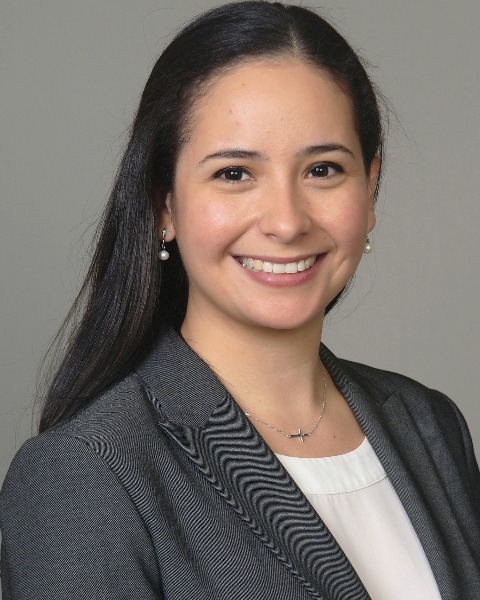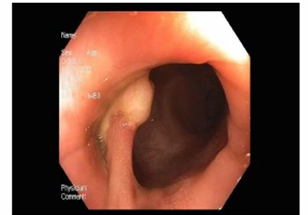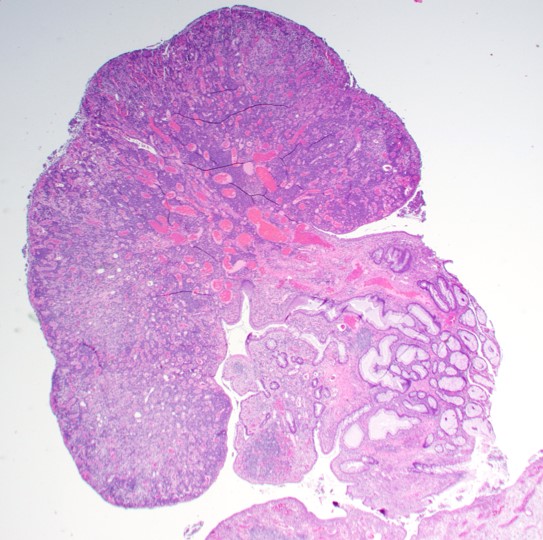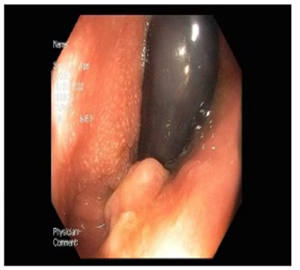Gastroenterology/Hepatology
Gastroenterology/Hepatology
54 - A Rare Mimic of Colitis: A Case of Hematochezia and Tenesmus Driven by an Anorectal Inflammatory Cloacogenic Polyp
Publication Number: 54.215

Maria F. Aguilera, MD (she/her/hers)
PGY-2 Pediatrics Resident
State University of New York Downstate Medical Center College of Medicine
Brooklyn, New York, United States
Presenting Author(s)
Background:
Chronic symptoms of hematochezia, frequent stooling, and tenesmus raise significant concern for inflammatory bowel disease (IBD). However, some less common conditions such as solitary rectal ulcer syndrome (SRUS) can sometimes mimic this disease, and be challenging to identify.
Objective:
In this case, we report another mimic of distal colitis, the Inflammatory Cloacogenic Polyp (ICP). These are benign inflammatory lesions that occur in the anal transitional zone and lower rectum. Because of their common location at the anorectal junction, they may easily be missed on endoscopic examination.
Design/Methods: A 13-year-old male with anxiety disorder presented with abdominal pain, frequent bowel movements, and tenesmus. The patient complained of colicky, diffuse abdominal pain progressively worsening for 1 year with an increased number of bowel movements, a sensation of incomplete emptying, and occasional urgency. Physical exam notable for epigastric tenderness and hypogastrium fullness with palpable stools. Labs were significant for an elevated ESR of 34 mm/hr with WBC elevated to 12.75 K/uL with normal CRP and Calprotectin. EGD and colonoscopy at the time were unremarkable, with normal histology, as was Magnetic Resonance Enteroscopy. The patient was diagnosed with irritable bowel syndrome. The patient was lost to follow-up for 1 year, but re-presented with worsened colicky abdominal pain, tenesmus, fecal mucus, and new hematochezia.
Results:
Repeat colonoscopy was performed which was remarkable for the presence of a large partially necrotic polyp located precisely on the anal verge which was removed with a hot snare. Histological review showed a polypoid lesion with surface ulceration and underlying dilated tubular colonic crypts in fibromuscular stroma, consistent with an ICP. The remainder of the evaluation was normal visually and on histology.
Conclusion(s): Even though our patient complained of frequent bowel movements, a careful inquiry made it clear that the increased frequency was not the result of diarrhea; he had marked tenesmus and repetitive nonproductive straining with formed or hard stools. These clinical findings are consistent with ICP caused by damage to the rectal mucosal due to straining pressure during defecation. In conclusion, inflammatory cloacal polyp and SRUS warrant exclusion in patients with distal colitis symptoms, necessitating the retroflexion view and slow colonoscope introduction to ensure they are detected. 


